Guide to Identifying and Removing Oriental Cockroaches
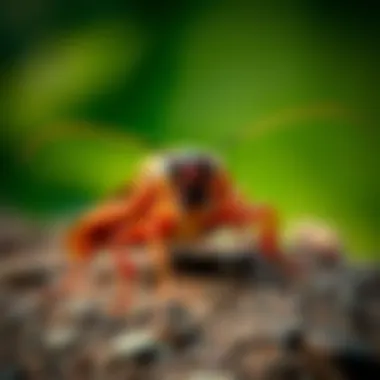
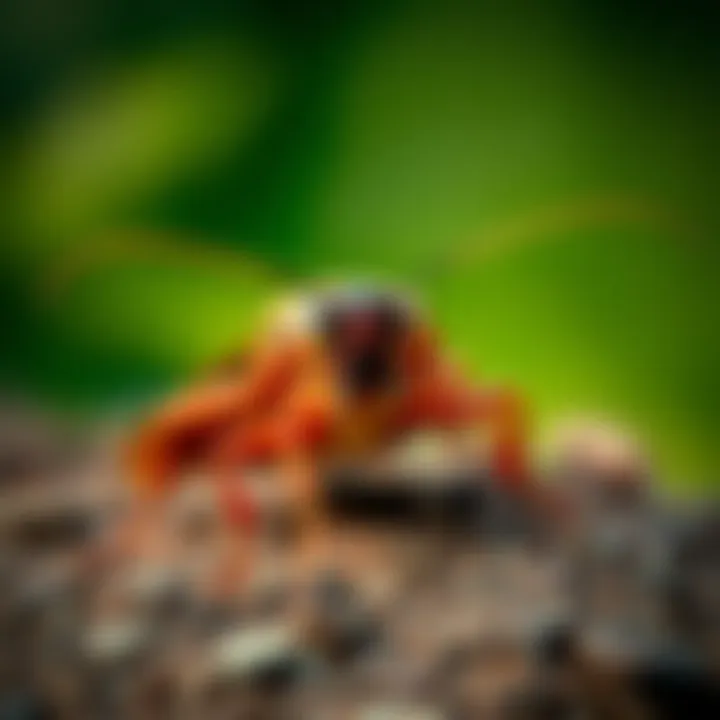
Intro
Oriental cockroaches, known scientifically as Blatta orientalis, are more than just unsightly visitors in homes; they can signify deeper issues regarding hygiene and pest management. These pests prefer damp, dark environments, making basements and crawl spaces prime real estate for their population growth. Understanding their characteristics and behavior is crucial for effective elimination. This article dives into the world of oriental cockroaches, providing keen insight into identification, signs of infestation, and innovative methods to prevent and control their presence.
Pest Identification
Common Household Pests
Identifying oriental cockroaches accurately is the first step toward effective pest management. They are often mistaken for other types of cockroaches. Characteristically, these pests have a dark brown to black coloration and can grow up to an inch long. Unlike their more notorious cousins, the German cockroaches, they sport a somewhat glossy appearance. Their wings are not always useful for flight; in fact, they prefer to scuttle across surfaces.
"The presence of cockroaches heralds a silent yet persistent battle against household hygiene."
Signs of Infestation
Detecting an oriental cockroach infestation isn’t always straightforward. Homeowners should be vigilant for the following signs:
- Droppings: Small, dark particle-like droppings in places such as kitchen cabinets or near trash cans often indicate a nearby population.
- Egg Cases: The egg cases, or oothecae, can often be found tucked away in tight spaces, usually hidden beneath appliances or furniture.
- Musty Odor: A noticeable foul smell can permeate areas where these insects reside, stemming from their secretions.
In addition to visual signs, being aware of changes in behavior—unusual sightings during daylight hours or nocturnal skittering noises—can help confirm a problem.
Prevention Methods
Environmental Modifications
Preventing oriental cockroaches from settling in your home often requires a combination of environmental changes and maintenance routines. Consider the following steps:
- Seal Entry Points: Caulk gaps around windows and doors, and use weather stripping to minimize access.
- Manage Moisture: Since they thrive in dampness, fix leaks and ensure proper ventilation in basements and crawl spaces.
- Eliminate Food Sources: Store food in airtight containers and promptly clean up spills and crumbs.
Home Maintenance Tips
Regular home maintenance can go a long way in deterring these pests:
- Routine Cleaning: Vacuuming regularly, especially in areas where food is prepared, reduces food and hiding spots.
- Declutter: Since cockroaches love hiding in clutter, keeping spaces organized can minimize suitable habitats.
DIY Pest Control Solutions
Natural Remedies
For those who prefer a more eco-friendly approach, several natural remedies can deter oriental cockroaches:
- Boric Acid: When sprinkled in areas like under sinks, boric acid can effectively control cockroach numbers by disrupting their digestive system.
- Diatomaceous Earth: This non-toxic powder can be spread in areas susceptible to infestations; its abrasive properties damage the exoskeleton of the pests, leading to dehydration.
DIY Traps and Barriers
Setting traps can also help to gauge and control pest populations. Here are some common methods:
- Homemade Traps: A bowl filled with soapy water can attract and trap cockroaches. The soap reduces surface tension, drowning them.
- Coffee Grounds: Mixing coffee grounds with water can create a bait; when the cockroaches ingest it, it can be detrimental to their survival.
In summary, understanding oriental cockroaches' habits and habitat preferences is essential for effective control. By implementing the discussed identification techniques, preventive measures, and home remedies, homeowners can safeguard their spaces against the presence of these pests.
Foreword to Oriental Cockroaches
Understanding oriental cockroaches is not merely an academic endeavor; it is essential for homeowners seeking to maintain a healthy living environment. These insects, often found lurking in dark, damp places, can pose significant hygiene concerns along with a myriad of other issues. This introduction aims to set the stage for an in-depth discussion on their identification, habitats, and behaviors, enabling readers to develop an arsenal of strategies for management and elimination.
In this section, we’ll examine two pivotal subsections: Overview of the Species and Common Habitats. This groundwork is necessary for anyone keen on preventing infestations before they escalate. Cockroaches are often seen as an unfortunate byproduct of urban living, but with the right knowledge, their presence can be significantly diminished.
"A journey of a thousand miles begins with one step" – this holds true for pest management; understanding is the first step.
By grasping the biological traits and habitat preferences of oriental cockroaches, readers can better appreciate both their resilience and vulnerabilities. This knowledge empowers homeowners, converting fear into informed action, which can ultimately lead to a pest-free home.


Overview of the Species
The oriental cockroach, scientifically known as Blatta orientalis, is characterized by its predominantly black or dark brown coloration. Measuring around one to two inches in length, they are often mistaken for their more notorious relatives. What sets them apart is not just their physical features, but also their distinct behavioral traits. These roaches are relatively poor flyers, preferring to scurry about on the ground, especially in moist and shady areas.
In terms of reproduction, oriental cockroaches exhibit a relatively slow life cycle compared to other species. A female tends to carry her eggs in a protective case, which she deposits in secluded areas, leading to challenges in eradication. This egg case can harbor numerous nymphs that are often difficult to spot until a sizeable population has developed.
Common Habitats
Oriental cockroaches thrive in a range of environments, but they are especially fond of damp, warm areas. Common locations where they may establish themselves include:
- Basements: Dark and moist, making it a perfect breeding ground.
- Kitchens and Bathrooms: These areas often have access to food and water, providing sustenance.
- Garbage Dumps: The abundance of decaying organic matter attracts them.
- Underneath Appliances: Spaces behind refrigerators or stoves provide both warmth and darkness.
The adaptability of oriental cockroaches allows them to invade a variety of settings, from single-family homes to larger multi-unit buildings. Recognizing their preferred habitats is crucial for anyone attempting to manage or prevent infestations.
Armed with the knowledge gained in this introduction, homeowners are now better equipped to tackle the complexities of identifying and dealing with oriental cockroaches. It’s time to delve deeper into the specifics as we explore their physical characteristics and life cycle stages in the next sections.
Identifying Oriental Cockroaches
Identifying oriental cockroaches is a crucial step in tackling a potential infestation effectively. These insects can be elusive, often hiding in dark, damp corners of a home, making it imperative for homeowners to recognize their distinct characteristics and behaviors early on. By understanding how to spot these pests, one can take appropriate action, minimizing damage to property and reducing health risks associated with their presence. Awareness is half the battle, and being informed not only aids in identification but also assists in implementing preventative measures before an infestation takes root.
Physical Characteristics
Oriental cockroaches, also known as "water bugs," have specific physical traits that set them apart from other cockroach species. They are typically larger, measuring about 1 to 1.5 inches in length. Their bodies are smooth and shiny, appearing in shades of dark brown or black. One notable feature is their broad, flat bodies which allow them to navigate through tiny cracks and crevices seamlessly.
- Wings: One might expect cockroaches to fly given their winged appearance. However, oriental cockroaches rarely take to the air. In fact, the males possess fully developed wings, but they prefer to scuttle over surfaces instead.
- Antennas: Their long, slender antennas can extend nearly as long as their bodies and are sensitive to the environment, helping them locate food and avoid danger.
- Legs: Strongly built legs enable these cockroaches to run quickly—a necessity for escaping predators or human attempts to eliminate them.
Recognizing these characteristics can be the first line of defense against an infestation. Homeowners should familiarize themselves with these traits, making it easier to identify these pests when they invade
Life Cycle Stages
Understanding the life cycle of oriental cockroaches is key in addressing their populations effectively. Their life cycle consists of three main stages: egg, nymph, and adult.
- Eggs: A female oriental cockroach can lay up to 40 eggs in a single capsule, known as an ootheca. These capsules typically resemble dark, smooth beans and are often hidden in warm, damp areas, such as behind appliances or in kitchen cabinets. The eggs hatch within a few weeks under optimal conditions.
- Nymphs: After hatching, the young cockroaches, or nymphs, emerge and begin a hungry existence. Initially, they are light tan, gradually darkening as they molt several times. This molting phase can last for months, where they reach maturity, which can happen in as little as six months under favorable conditions but may take longer in colder climates.
- Adults: Once they reach adulthood, they can reproduce, perpetuating the cycle. "If you see one, there's usually a lot more hiding nearby," said a longtime pest control expert, highlighting the importance of prompt action.
To sum it up, knowledge of the life cycle stages can greatly assist homeowners in reducing the chances of an infestation.
Understanding the physical traits and life cycle stages of oriental cockroaches provides a necessary foundation for effective pest control and prevention strategies.
By sharpening your knowledge in these areas, you can better protect your home from these unwanted guests and influence your approach to pest management effectively.
Behavioral Patterns of Oriental Cockroaches
Understanding the behavioral patterns of oriental cockroaches is not just an academic exercise; it's a crucial component in effectively managing these unwelcome guests in our homes. By examining their feeding habits and reproductive behaviors, we gain insights that can significantly enhance the strategies we employ for their elimination and prevention. This section focuses on why grasping these behaviors is pivotal and how it can directly influence successful pest control efforts.
Feeding Habits
Oriental cockroaches are notorious for their scavenging tendencies. Their feeding habits are quite resourceful, making them adept at thriving in adverse environments. These roaches primarily consume organic materials, including food waste, decaying matter, and even books or paper when starving. This opportunistic behavior highlights the necessity of maintaining a clean environment to deter their presence. Here are a few important feeding habits to consider:
- Nightly Activity: Oriental cockroaches are nocturnal, which means they do the majority of their foraging at night when it’s dark and quiet.
- Wide Diet Range: Their ability to eat diverse organic materials means that they can survive on waste that may not seem appealing to humans.
- Moisture Preference: They also require moisture to survive. Thus, areas like kitchens and bathrooms, where crumbs and spills are more common, provide particularly attractive feeding grounds.
To minimize the chances of an infestation, homeowners should be vigilant about cleaning up spills, securing food storage, and addressing moisture issues around their living spaces.
"A clean home is less inviting for these persistent scavengers, so don’t leave crumbs to chance."
Reproduction and Growth
The reproductive cycle of oriental cockroaches further complicates the issue of infestations. Females can produce around 30 to 40 eggs in a single ootheca, which is often dropped in hidden locations, making them hard to find and eliminate. Understanding their growth stages can help homeowners in better targeting their efforts. Here are the key features of their reproductive and growth patterns:
- Egg Development: The eggs incubate for about 30 days before hatching, depending on environmental conditions such as temperature and humidity.
- Nymph Stage: Once hatched, the young roaches (nymphs) undergo about six molts, growing larger with each stage. This period is crucial, as they are still vulnerable and can be effectively targeted for control.
- Maturity: Oriental cockroaches generally reach maturity in about six months, allowing for rapid population growth if not managed.
It’s easy for a few to become a legion if adequate measures aren’t in place. Therefore, regular inspections and a proactive approach to their control can save a lot of trouble down the road.
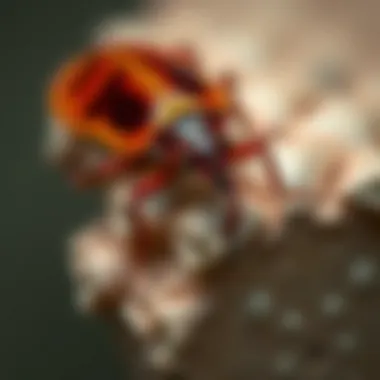
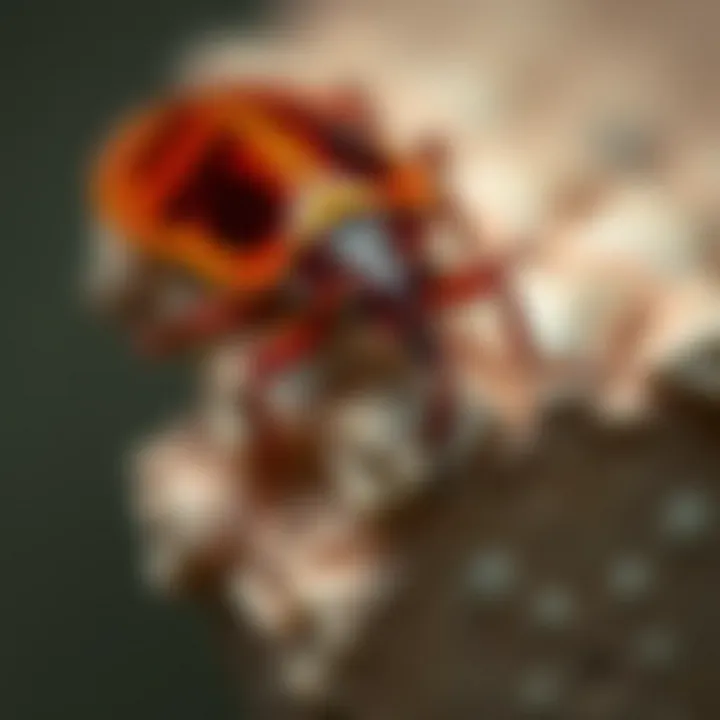
By having a deeper understanding of the feeding habits and reproductive behaviors of oriental cockroaches, homeowners can tailor their extermination efforts more effectively. Implementing targeted strategies based on their behaviors not only makes pest management more efficient but also helps in preventing future infestations.
Signs of Infestation
Detecting the signs of oriental cockroaches in your home is crucial not just for immediate pest control but also for maintaining a healthy living environment. Recognizing these indicators early can save homeowners a lot of hassle in terms of clean-up and potential health risks. Oriental cockroaches tend to thrive in neglected, damp areas of a home, and understanding the signs of an infestation can prove to be the key to effective prevention and elimination strategies.
Common Indicators
When it comes to spotting the presence of oriental cockroaches, there are a few telltale signs that homeowners should keep an eye out for:
- Droppings: One of the most prominent signs is the presence of droppings, which appear as small, dark, and cylindrical pellets. You may find them near food sources, hidden corners, or damp areas. The droppings can often be mistaken for mouse droppings, but their shape and size are different—being more elongated and thinner.
- Egg Cases: The egg cases, or oothecae, of these cockroaches are typically brownish and oval-shaped. These cases can often be found in crevices or near water sources, indicating a breeding ground.
- Shed Exoskeletons: As these cockroaches grow, they molt, leaving behind bodies known as exoskeletons. If you notice small, brown, crispy shells around your home, it’s a clear indication that cockroaches have made your space theirs.
- Unpleasant Odor: Oriental cockroaches might emit a musty smell as they inhabit a space. This could be particularly noticeable in areas where they congregate.
- Sightings: Finally, the most direct indicator of an infestation is actually seeing these pests. They tend to scurry quickly when lights are turned on, usually hiding in dark areas. This behavior is often more prominent during the evening or at night.
It’s vital that if any of these signs are observed, immediate action is taken to investigate further and mitigate the issue before it escalates into a full-blown infestation—"a stitch in time saves nine," as they say.
Health Risks and Concerns
Understanding the health risks associated with oriental cockroaches is just as important as recognizing their presence. These pests can pose multiple health hazards:
- Allergies and Asthma: The urine, droppings, and decaying bodies of cockroaches contain allergens that can lead to respiratory issues and asthma in susceptible individuals. For those with pre-existing conditions, exposure may exacerbate symptoms considerably.
- Bacterial Transmission: Oriental cockroaches are known to carry various bacteria, including Salmonella, which can cause foodborne illnesses. They may contaminate food and surfaces, increasing the risk of ingesting harmful pathogens.
- Infections: These pests can also serve as vectors for other diseases, indirectly promoting the spread of pathogens through contaminated surfaces and environments. Experiencing a cockroach infestation could push your household into a higher risk category for health-related issues.
"An ounce of prevention is worth a pound of cure."
Methods for Elimination
Dealing with oriental cockroaches can be a nuisance that no homeowner desires. The Methods for Elimination section is crucial because it lays down the various strategies one can employ to actually tackle these pesky creatures. Understanding how to properly use these methods, whether chemical or non-chemical, is essential for effective pest control. Each method has its own set of benefits and considerations that can ultimately affect the success of your efforts.
Chemical Treatments
Chemical treatments serve as a powerful tool in the arsenal against oriental cockroaches. These products provide quick and often immediate results by targeting the insect's nervous system. Common solutions include insecticides like Boric Acid, Pyrethrins, and Fipronil. These compounds can either be applied as sprays, powders, or bait stations.
Some of the primary advantages of chemical treatments are:
- Speed: Many chemical solutions act quickly, providing rapid relief from infestations.
- Accessibility: These products are readily available at local home improvement stores and online, making them easy to obtain.
- Effectiveness: When used correctly, they can substantially reduce cockroach populations.
However, it's important to consider some potential drawbacks:
- Health Risks: Improper use can expose family members or pets to harmful substances.
- Environmental Impact: The use of pesticides can lead to soil and water contamination if not handled properly.
- Resistance: Over time, cockroaches may develop resistance to certain chemicals, reducing their effectiveness.
"Always read the label, follow the instructions, and ensure proper ventilation when using chemical treatments."
Non-Chemical Strategies
For those who prefer a greener approach, non-chemical strategies can provide substantial results. These methods focus on prevention, sanitation, and natural deterrence rather than killing the pests directly. Here are some effective non-chemical strategies:
- Sealing Entry Points: Identify and seal cracks, gaps, and holes around windows, doors, and foundations to minimize entry points for these pests.
- Regular Cleaning: Keep your home clean and free of food debris. Mopping, vacuuming, and promptly cleaning up spills can greatly decrease your chances of an infestation.
- Boric Acid Paste: Mixing boric acid with sugar water can attract and kill the cockroaches without using harmful chemicals.
- Diatomaceous Earth: Sprinkling this powder in areas where cockroaches hide can help rid your home of these pests by damaging their exoskeleton.
Employing non-chemical strategies can evoke a sense of satisfaction as they are often safer for the environment and for household members, tailored for those who are eco-conscious.
Professional Pest Control Options
Sometimes, the infestation may be too large to manage with DIY methods. In these cases, calling in professionals can save time and headaches. Pest control companies, such as Terminix or Orkin, specialize in dealing with cockroach problems and come equipped with advanced tools and knowledge. Here’s why you might consider enlisting their help:
- Expertise: Professionals understand cockroach behavior and biology, which aids in devising effective treatment plans tailored to your situation.
- Comprehensive Approach: They often use a combination of methods - chemical and non-chemical - to eliminate infestations quickly and decisively.
- Long-Term Solutions: Professional services usually include follow-up visits and ongoing monitoring to prevent re-infestation.
- Safety: Trained technicians know how to handle chemicals safely, which can reduce the risk of accidental exposure.
Ultimately, deciding whether to go the DIY route or to hire a professional depends on the extent of the problem and personal preferences. Knowing your options allows homeowners to take informed actions against these unwelcome guests.
Prevention of Future Infestations
Preventing future infestations of oriental cockroaches is crucial, not just for maintaining a clean home, but also for ensuring peace of mind. These insects can reproduce rapidly, leading to a more significant problem if not dealt with adequately. Implementing effective prevention strategies can save time, money, and potential health risks. Knowing how to keep them at bay gives homeowners greater control over their living environment.

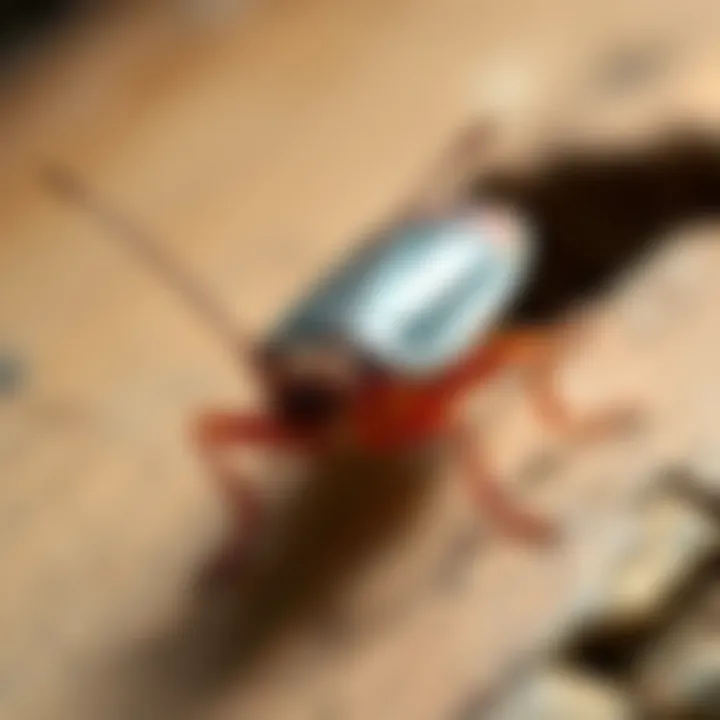
Environmental Modifications
To effectively hinder the chances of cockroach infestation, the physical environment around your home must be reshaped. Environmental modifications can make your living spaces less appealing or accessible to these resilient pests. Here are some noteworthy adjustments:
- Seal Cracks and Gaps: Cockroaches are known for squeezing through the tiniest of openings. Be vigilant about sealing gaps in walls, around windows, and near doors. Suitable materials include silicone caulk or weather stripping.
- Remove Clutter: An inviting home for a cockroach often means cluttered areas. Keep storage boxes tightly sealed and reduce the number of items on surfaces to decrease their hiding spots.
- Water Management: Cockroaches thrive in moist environments. Fix any leaks, ensure good drainage in your yard, and avoid leaving water standing in trays under houseplants.
- Landscape Wisely: If your home has vegetation, make sure that plants are trimmed back from the house. This reduces crawling pathways and potential entry for pests.
In addition, using organic barriers like diatomaceous earth can deter these pests without resorting to chemicals. Education about what attracts them is key; they like dark, damp, and food-rich locations.
Regular Maintenance Practices
Engaging in regular maintenance practices could spell the difference between a serene home and an infestation. Develop a routine that prioritizes cleanliness and checks for potential issues:
- Routine Cleaning: A tidy house is hard to resist, especially for cockroaches. Regularly vacuum and wipe surfaces to eliminate food residues and crumbs.
- Inspect Regularly: Keep an eye on common cockroach hotspots such as kitchen cabinets, behind appliances, and bathrooms. Spotting them early can help in taking timely action.
- Proper Food Storage: Store food in airtight containers and avoid leaving pet food out overnight.
- Trash Management: Ensure that trash bins have tightly fitting lids. Regularly dispose of garbage to eliminate another enticing feature of your kitchen.
Implementing these practices creates a seemingly inhospitable environment for cockroaches. Remember, while these techniques can minimize your risk of an infestation, vigilance remains pivotal. Stay informed about changes in pest behavior and adapt your strategies accordingly.
"An ounce of prevention is worth a pound of cure."
By merging environmental modifications and regular maintenance, homeowners can drastically reduce the likelihood of encountering oriental cockroaches. Emphasis should remain on establishing and sustained efforts for remarkable results.
Sustainable Pest Management Techniques
Sustainable pest management techniques are becoming more essential as awareness of environmental impacts grows. Homeowners are looking for ways to control pests like oriental cockroaches without harming the ecosystem. The techniques we explore here not only help in managing these pests effectively but also seek to minimize the use of harmful chemicals that can linger in homes and gardens. By adopting sustainable methods, homeowners contribute to a healthier environment for both their families and the wildlife around them.
Using Natural Repellents
Natural repellents present an excellent alternative to conventional pesticides. These substances can deter oriental cockroaches while being less toxic. Common natural repellents include substances like:
- Diatomaceous Earth: This powdery substance is effective against cockroaches. It damages their exoskeleton, leading to dehydration.
- Essential Oils: Oils like peppermint and neem have shown insect-repelling properties. Mixing these oils with water in a spray bottle can create an effective repellent.
- Vinegar Solutions: Vinegar can disrupt the scent trails that cockroaches use to navigate, making it harder for them to find food and each other.
Using these natural repellent options, homeowners can have peace of mind that they’re protecting their spaces without resorting to harsh chemicals. It is also crucial to remember that while these methods can be effective, they should be part of an integrated approach to pest management, rather than a stand-alone solution.
Integration of Eco-friendly Methods
Integrating eco-friendly methods into pest control strategies can significantly enhance effectiveness and ensure safety. A few considerations include:
- Monitoring and Inspection: Regularly inspect your home for signs of cockroaches and eliminate any standing water or food sources.
- Habitat Manipulation: Make your property less inviting by sealing entry points, reducing clutter, and maintaining cleanliness. This deters not only oriental cockroaches but other pests too.
- Biological Control: Introducing natural predators or employing beneficial parasitoids can help keep cockroach populations in check without the use of chemicals. For instance, some birds feed on cockroaches, so creating a bird-friendly environment can act as a form of natural pest control.
By applying these eco-friendly methods, homeowners can create a holistic approach to pest management that supports local ecosystems while effectively managing infestations.
One of the significant benefits of integrating sustainable methods in pest control is that these strategies tend to address the root causes of pest problems, leading to long-term solutions rather than quick fixes.
In summary, sustainable pest management techniques provide a responsible way to deal with oriental cockroaches. By choosing natural repellents and incorporating eco-friendly methods, homeowners can effectively protect their homes while promoting environmental health.
The Role of Education in Pest Control
When it comes to tackling the issue of oriental cockroaches, education plays a pivotal role. It’s not just about knowing how to exterminate these pests but also understanding their patterns, behaviors, and life cycles. Armed with this knowledge, homeowners can take proactive steps to prevent infestations before they happen.
Education on the lifecycle and habits of oriental cockroaches is essential. These insects thrive in damp, dark places. They like clutter and moisture, making basements and kitchens their favored territories. Understanding these habits helps homeowners identify potential breeding grounds and take necessary actions.
Moreover, armed with knowledge, individuals can make informed decisions on pest control methods. Not every solution is suitable for every home. Education empowers house owners to choose between chemical treatments, natural repellents, or even hiring professionals, depending on their unique circumstances.
In essence, education not only helps in immediate corrective actions but also fosters long-term preventive strategies. A continuously educated homeowner can ensure that their environment remains inhospitable to these pests for years to come.
Awareness on Pest Behavior
Understanding the behavior of oriental cockroaches is the foundation of effective pest management. For instance,
- Timing is crucial, as these nocturnal creatures are most active during the night. This means that any traps set or inspections conducted during the daytime may yield few results.
- Cockroaches are notorious for their fast reproduction rates. A single female can produce hundreds of offspring in her lifetime, which is a significant reason why infestations can spiral out of control so quickly.
- They are scavengers, feeding on organic material, which includes crumbs, grease, or even decaying matter. Thus, homeowners can take preventive steps by maintaining cleanliness, particularly in kitchens.
By fostering a better awareness of these behaviors, homeowners can respond more swiftly and adequately to signs of infestation. An informed approach mitigates health risks associated with cockroach droppings and can lead to a cleaner, safer living environment.
Community Outreach Programs
An effective way to further education on pest control in the case of oriental cockroaches is through community outreach programs. These programs can serve as a platform for sharing valuable information and resources.
- Workshops and seminars: Local pest control agencies or environmental organizations can conduct workshops that educate the public on identifying and managing pest infestations effectively. These sessions are often interactive, enabling attendees to ask questions and learn about the latest pest management techniques firsthand.
- Distributing educational materials: Flyers, brochures, or even digital content that elaborate on prevention methods, behavioral insights, and effective elimination strategies can be vital. Making these materials available in community centers helps ensure a wider reach.
- Neighborhood initiatives: Forming neighborhood watch groups focused on pest management can enhance vigilance. When community members collaborate, they can pool together resources, educate one another, and share experiences to tackle common pest issues more effectively.















